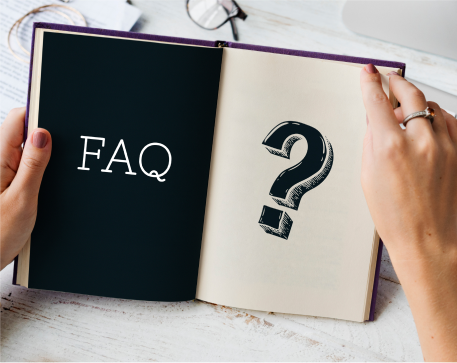Ready to learn?
Take the first step toward achieving your educational goals. Whether you’re preparing for exams or expanding your knowledge, getting started is just a click away. Join us today and unlock your full potential
832, utkarsh bhawan, near mandap restaurant, 9th chopasani road, jodhpur rajasthan - 342003
support@utkarsh.com
+91-9116691119, +91-9829213213
Support
Learning Resources
Rajasthan Govt Exams
Central Govt Exams
Civil Services Exams
Nursing Exams
School Tuitions
Other State Govt Exams
Agriculture Exams
College Entrance Exams
Miscellaneous Exams

© 2025 Utkarsh Classes & Edutech Pvt. Ltd. All Rights Reserved
Home
International Current Affairs
Appointment
William Lai Ching-te takes oath as the new President of Taiwan

Utkarsh Classes
Updated: 21 May 2024
5 Min Read

William Lai Ching-te was sworn in as the new president of the Republic of China or Taiwan on 20 May 2024. It marks the third consecutive term for the ruling Democratic Progressive Party. The outgoing president, Tsai-Ing Wen, was also from the Democratic Progressive Party. Lai Ching-te was the vice president under the Tsai-Ing Wen administration.
Vice President Hsia Bi-khim also took the oath as the country's vice president. The ceremony in Taipei was attended by representatives from 29 countries, including the United States, Japan and Taiwan’s 12 diplomatic allies in the Pacific, Central America, and the Vatican.
Speaking on the occasion, President William Lai Ching-te said that Beijing should stop its aggression against Taiwan and his administration will strive to “maintain peace and stability in the Taiwan Strait.
Taiwan is an island country in the West Pacific Ocean. It lies around 160 km from the southeastern coast of China.
China, officially known as the People's Republic of China, views Taiwan as a breakaway province that must become part of It. The Chinese government has not ruled out using force to integrate Taiwan into China.
China claims Taiwan as its part. The island of Taiwan, also known as Formosa, was occupied by Japan after the defeat of China in the 1894 China-Japan War.
After Japan's defeat in the Second World War, Taiwan, with the backing of the United States and the United Kingdom, became part of the Republic of China in 1945, which was ruled by Chiang Kai Shek.
After the Second World War, a civil war broke out in China between Chiang Kai, led by the Nationalist Party(Kuomintang Party) and the Communist Party, led by Mao Zedong,
Mao’s Communist Party defeated the Nationalist Party(Kuomintang Party) led by Chiang Kai Shek. Chiang Kai Shek and his followers fled to Taiwan and established the Republic of China in Taiwan in 1949. Mao established the People’s Republic of China in mainland China.
Chiang established a dictatorship in Taiwan, and the first election in Taiwan was held in 1996. The Republic of China government claimed that it represented the whole of China and was supported by Western Countries. Taiwan held China’s seat in the United Nations Security Council.
In 1971, after a deal between the United States and the People’s Republic of China, the United Nations seat was given to the People’s Republic of China, which many countries recognised as the main China.
The United States of America, which is Taiwan's biggest supporter, established diplomatic ties with the People’s Republic of China in 1979.
China follows a one-China policy under which a country that recognises Taiwan cannot establish diplomatic relations with China. Initially, many countries established diplomatic relations with Taiwan as it was backed by the western countries led by the United States of America.
With China's growing economic and political might, many countries have broken their diplomatic relations with Taiwan and established relations with China.
At present, only 12 countries recognise Taiwan.
China has suggested “one country, two systems” for Taiwan, which it said would allow Taiwan significant autonomy if it agreed to come under Beijing's control. China gives the example of Hong Kong. Hong Kong was under British rule for over 200 years and was handed back to China in 1997 under the “one country, two systems.
Taiwan has not accepted China’s offer. In 2000, Chen Shui-bian of the Democratic Progressive Party (DPP)was elected president of Taiwan and called for its independence as a separate country.
In response, China passed an anti-secession law in 2004. The law provides for the use of non-peaceful means against Taiwan if it tries to break away from China.
Chinese President Xi has set 2049 as the date for reuniting Taiwan with China.
China’s People's Liberation Army regularly conducts war drills, and its Air Force has regularly crossed Taiwan’s airspace to intimidate Taiwan.
The United States maintains diplomatic relations with China and recognises the Chinese government as legitimate under the One China Policy. It is also the most important supporter of Taiwan.
The United States is bound by law to provide arms and ammunition to Taiwan.
The current Biden administration has said that it will defend Taiwan militarily if it is attacked by China.
India, under Nehru, accepted the One China policy and established diplomatic relations with the People’s Republic of China. It has no diplomatic relations with Taiwan.
However, after the Indian government adopted the Look East Policy in 1991, economic ties between India and Taiwan were promoted.
In 1995, the two countries established representative offices in each other’s capitals. The trade and investment between the countries are growing. The bilateral trade between India and Taiwan in 2023 was around 8.224 billion US dollars.
Taiwan’s companies like Foxconn have invested in India.
Top Posts
Frequently asked questions

Still have questions?
Can't find the answer you're looking for? Please contact our friendly team.
Visit an Offline Centre Near to You.

Winter Selection Offer is LIVE Now!
Sabhi Online Courses par Up to 90% OFF + Uptp 500 Cashback + 50% Extra Validity New Users & Extension par Extra Savings